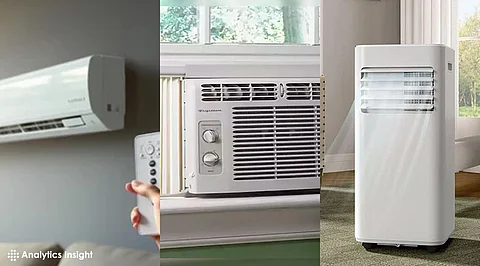

With summer getting hotter each year, buying an air conditioner is no longer just about comfort—it’s about getting through the season without sweating through every shirt. But picking the right type of AC can get confusing fast. There are three main types available in stores right now: split, window, and portable. Each one works differently, and the best one depends on the room, the budget, and how often it’s going to be used.
Split ACs are the most powerful option out there. These are the ones that have one part inside the room and another part installed outside. They’re great for bigger rooms, and they also make less noise. Many of them come with inverter technology, which helps save on electricity over time. These are the ones often seen in newer homes, offices, or larger bedrooms.
Window ACs are a bit more old-school but still reliable. Everything is packed into one box that fits in a window or a wall slot. They work well for smaller to medium rooms and don’t cost as much upfront. They might not be as quiet as split ACs, but they get the job done.
Portable ACs are like mini-towers that can roll from one room to another. They don’t need permanent installation, but they’re not great for big spaces. These are often chosen by students living in rented places or for rooms where installing a split or window unit isn’t allowed. But they can be noisy and not as strong as the other two.
Split ACs need proper installation. That includes drilling holes in the wall to connect the indoor and outdoor units, which usually needs a professional to do it. Once installed, they don’t move around and take up no floor space.
Window ACs are easier to install. As long as there’s a suitable window or a cut-out in the wall, the unit can be set up without much hassle. These ACs do stick out of the window a bit, which might not work in all buildings or apartments.
Portable ACs don’t need any kind of heavy setup. Just plug them in, connect the exhaust pipe to a window, and they’re ready. These are handy for people who move often or don’t want to deal with installation. The downside is that they take up floor space and need to be placed near a window.
Split ACs are better at saving electricity, especially the ones with high star ratings and inverter features. Even if the starting price is higher, they can save money on bills in the long run. They also need basic upkeep like cleaning filters and checking gas levels once in a while.
Window ACs use more electricity than split units of the same size, but maintenance is easy and cheap. Most of the time, cleaning the filters every few weeks keeps them working fine.
Portable ACs usually use the most electricity and might need more frequent cleaning. Since the whole unit sits inside the room, some of the cool air gets lost through the exhaust pipe, which makes the machine work harder.
Window ACs are the most budget-friendly. A 1-ton unit usually starts around ₹25,000 and cools a small room pretty well.
Split ACs are more expensive, starting from ₹30,000 and going up depending on features and capacity. They are a good choice for someone planning to stay in one place for a few years and looking for quiet, strong cooling.
Portable ACs cost anywhere from ₹35,000 to ₹40,000. They make sense in situations where permanent installation isn't allowed or possible. But compared to their price, they often don’t match the cooling power of the other two.
For a large room or for daily use in a family home, split ACs are the best bet. For smaller rooms or hostels with basic needs, window ACs work well and save money. Portable ACs are good for short-term use or in places where nothing else fits.
Picking the right air conditioner is mostly about knowing how much cooling is needed and how the space is set up. The wrong choice can mean high electricity bills, poor cooling, or both. The right one makes summer a lot easier to live through.
